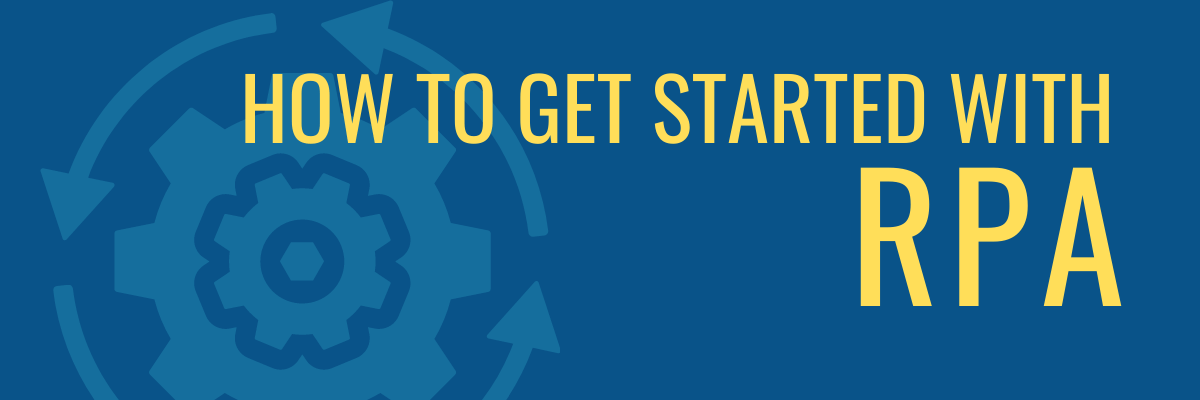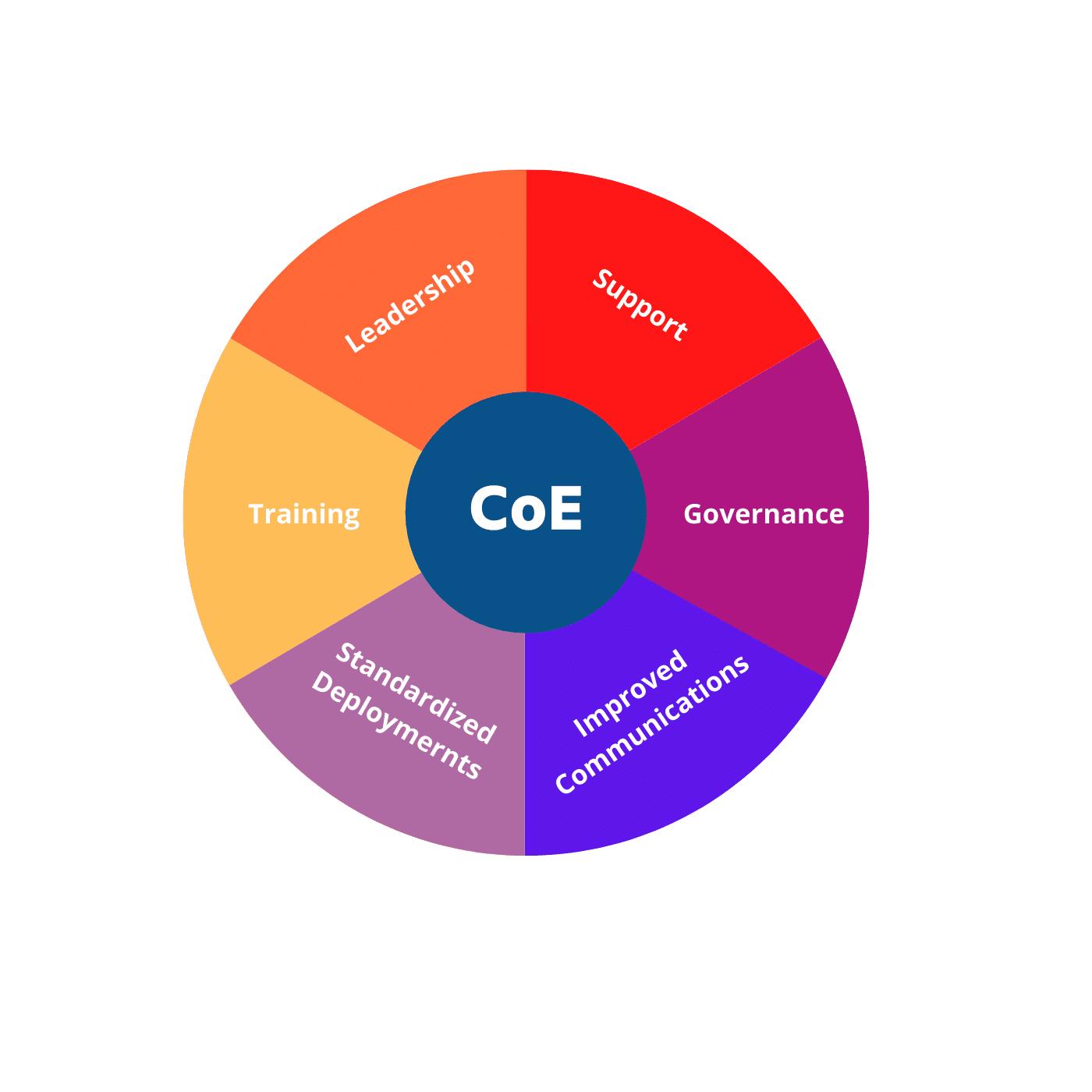
Robotic process automation (RPA) is becoming the golden child of the enterprise software market. In fact, by the end of 2022, it’s expected that 85 percent of enterprises will use some form of RPA.
RPA is a powerful tool that allows virtual robots to work alongside employees to do mundane, repetitive low-value tasks such as:
- Gathering data and validating
- Completing recurring reports
- Filling in forms
- Migrating data
- Emailing customers
While it’s easy to get excited about the capabilities of RPA, it’s not something you should just jump into. On average, RPA projects have a failure rate between 30 and 50 percent, which means getting started correctly with best practices in mind is critical to a successful implementation. To help you understand how to get started with RPA, we’ve laid out four of the must do steps anytime you’re rolling out an RPA project.
How to Get Started with RPA
1. Build an RPA Center of Excellence
We recommend not to apply RPA until you’ve built out a team of RPA experts who will work to raise awareness of the technology and its capabilities. This team will be known as your Center of Excellence (CoE).
A CoE is a team or department that steps into a leadership role to provide best practices, support and training for new rollouts at a company; in this case the new rollout is RPA.
Your CoE should be thought as your RPA advocates who are excited about the technology and will go above and beyond to obtain buy-in from different departments and explain how RPA can help them achieve their goals. Your RPA champions will effectively provide insight into how RPA bots work — especially alongside employees. It’s important to convey that RPA will complement an employee’s workload — not replace them.
This team works with all departments ready to implement RPA technology into their processes, allowing anyone to have access to related RPA data as well as the ability to contribute new ideas around deployments. An established CoE helps the entire operation launch more efficiently and accelerate the organization’s adoption of RPA.

2. Identify potential processes
Now that you’ve built your CoE, establish which of your processes should be prioritized for implementing RPA. We recommend starting small to allow your teams to obtain quick wins and give your team the ability to play around and learn the tools without having huge implications on the overall process if something was to go wrong. Evaluate which of your repetitive, time-consuming tasks could be easily automated. Some examples might include:
- Copying and pasting data
- Filling in forms
- Creating and sending emails
- Performing calculations
Factor in other objectives that you might not have considered. What do you actually want to achieve with RPA?
- Reduce operating costs?
- Improve customer engagement?
- Reduce the time of a specific workflow process?
Also determine the impact of doing nothing at all. For example, maybe there is a certain area of your workflow that’s causing customer loss which could be improved with RPA
3. Prioritize Your Processes
Now that you’ve identified what processes could be streamlined, it’s time to prioritize which processes you would like to automate first.
Start by evaluating the complexity of your processes. Again we recommend, going for the easiest tasks that could be automated so you can better understand and feel comfortable with RPA. This will also help gain the confidence of your employees to understand how RPA can be utilized and how it can make their job easier.
Prioritization of your processes should also take ROI into account by considering the following factors:
- Time savings: How much time was saved using a bot to perform these tasks vs a human doing them? Bots should cut the time down drastically.
- Error eliminations: How many errors were eliminated between bot and human performance? Bots are known for being error-free, resulting in improved productivity.
- Employee satisfaction: Are your employees more satisfied performing their work? RPA should give your staff more time to focus on prioritizing more important tasks instead of tedious tasks that consume time.
- System Updates: Have you checked to make sure that your bots will run effectively? Should you make any software updates? Sometimes a UI can change to the point of breaking a bot resulting in extra man-hours needed to go into repairing, testing and redeploying the bots.
- Cost: How much investment went into the software, infrastructure and development of RPA? Evaluate this and compare with the hours put into workflow tasks that could be automated to see how you can maximize ROI.
Between looking at simple tasks and ROI, you’ll be able to make rational decisions of which processes to implement first.
4. Leverage Expertise
While RPA was created for the business user in mind, if setup is disorganized or there are too many people involved, it could cause more harm than good, resulting in loss of productivity and interruption of any workflow.
Having a partner or vendor onboard to assist with RPA implementation will not only accelerate your RPA projects but also provide guidance and experience into how you can use RPA correctly and effectively.
Most vendors have packages in which they come in for a certain amount of time to help. This is ideal for enterprises that lack experience in RPA and want an in-depth understanding and guidance of how to correctly implement RPA and meet their goals. There are also process workshops and technical training available.
A partner will provide best practices of RPA from building your infrastructure to bot development as well as provide you with ongoing support and maintenance, should any issues occur.
Start Your RPA Journey the Right Way
As a simple software with good ROI, RPA is a smart choice for most companies. If you plan to implement RPA, we’ll make sure that you’re setting yourself up for success. At Pyramid Solutions, we follow a comprehensive process from consultant to support, so we’re with you every step of your RPA implementation.
To learn more about deploying RPA technology at your company, check out these resources below:
